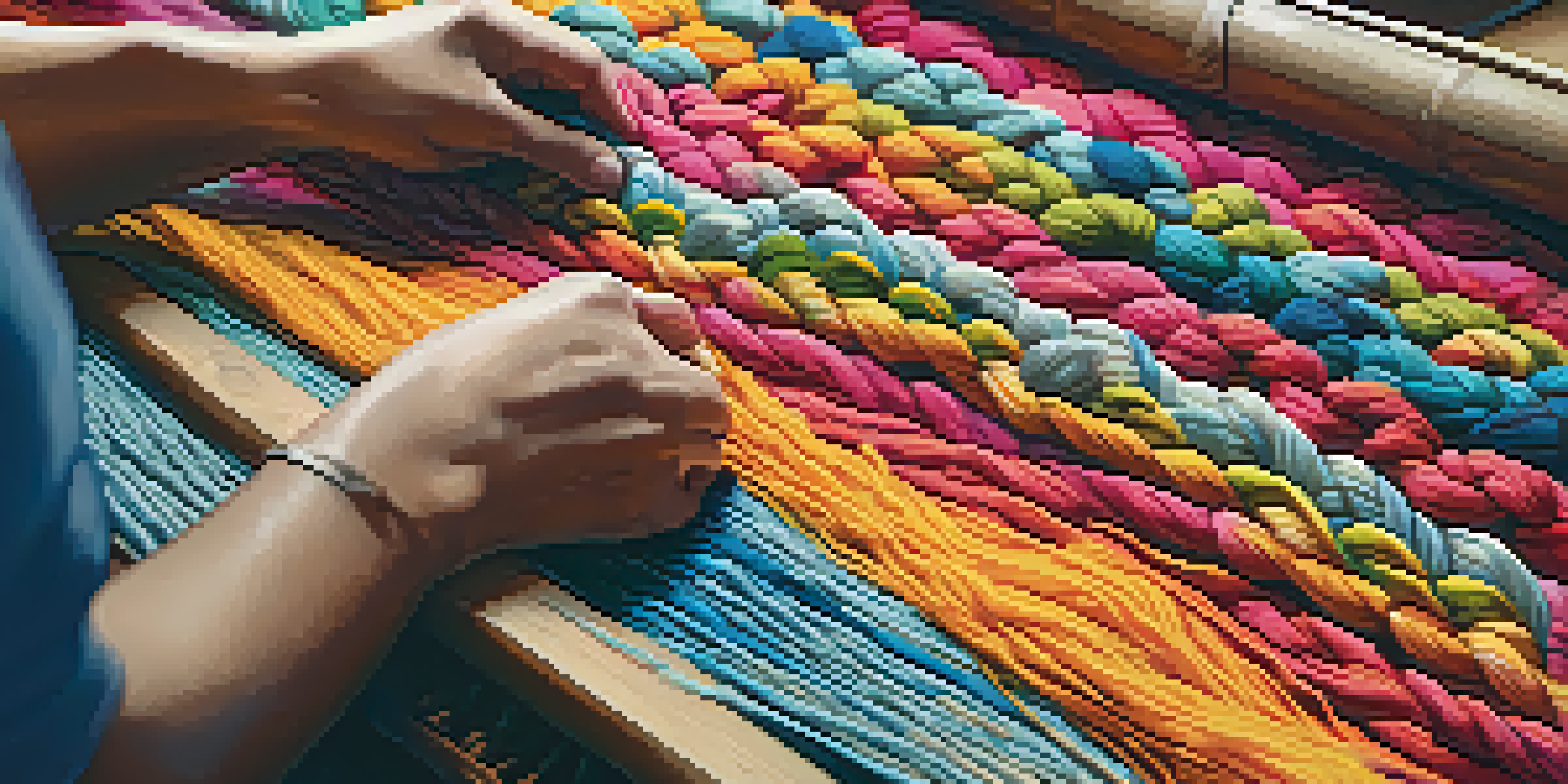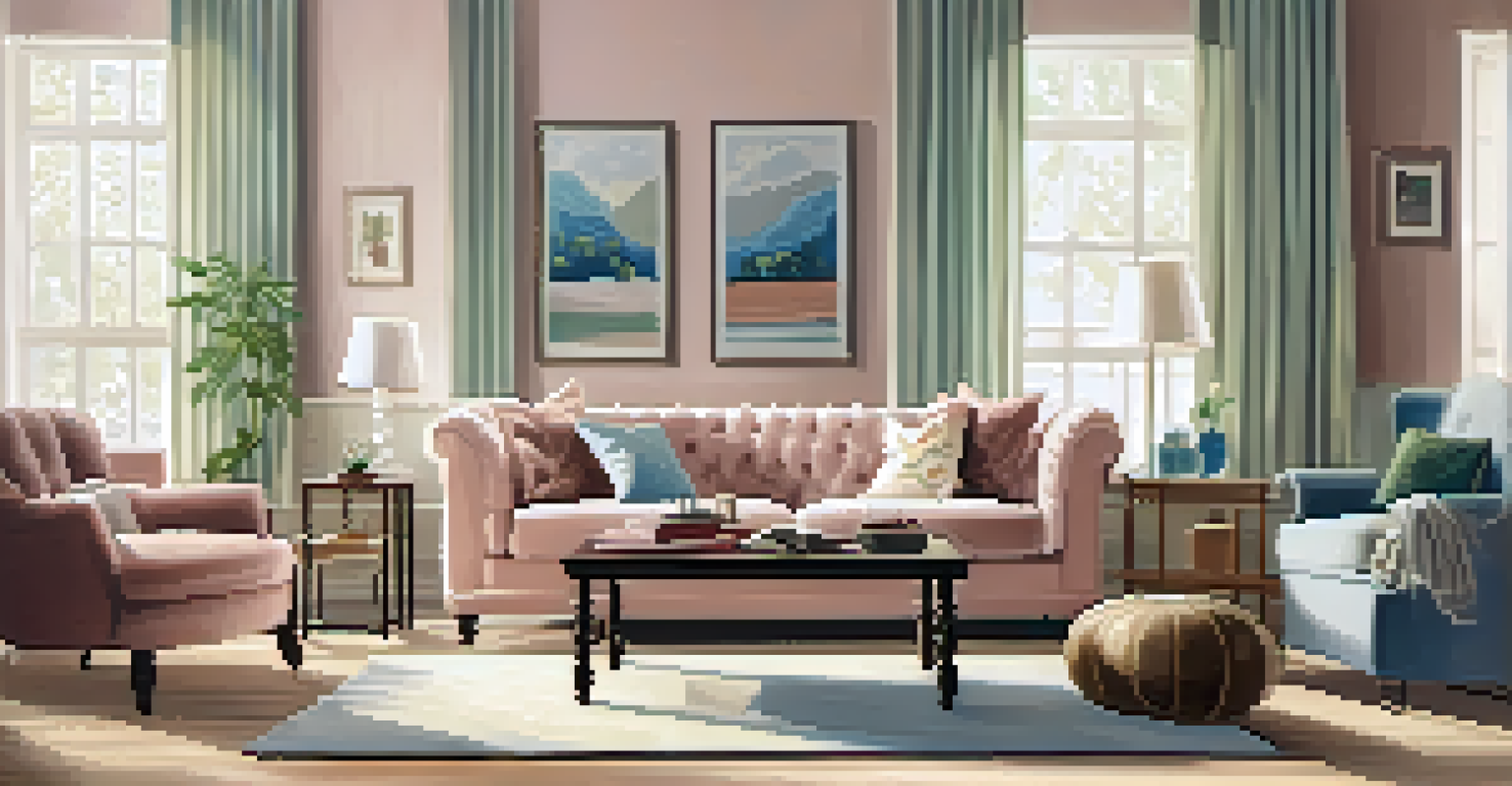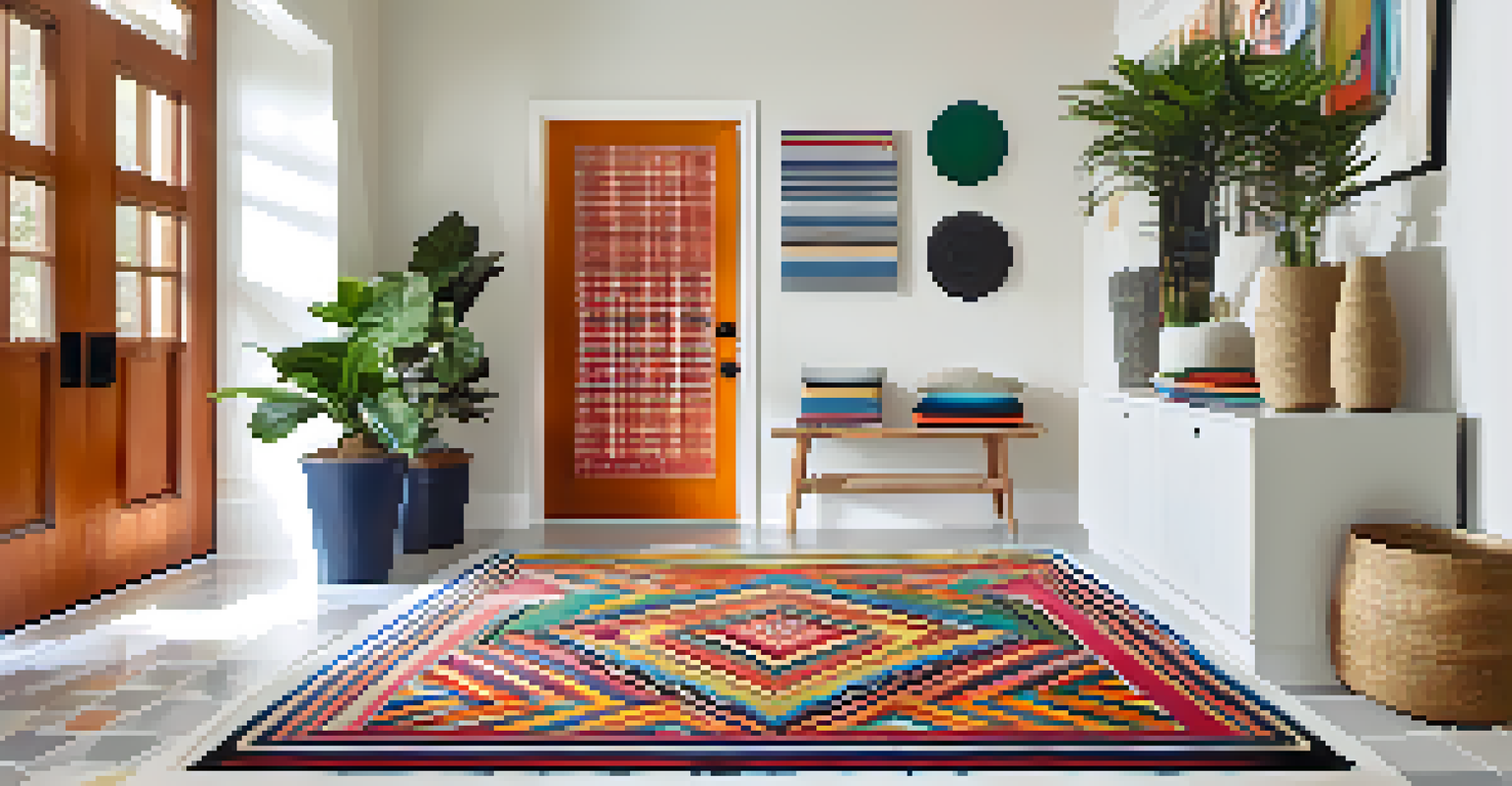Different Types of Weaving Techniques for Rug Making

Understanding the Basics of Weaving Techniques
Weaving is the process of interlacing threads to create fabric, and it’s essential in rug making. At its core, weaving involves two sets of yarns: the warp, which runs vertically, and the weft, which weaves horizontally. The interplay between these threads creates various textures and patterns, allowing for endless creativity in rug design.
Weaving is an ancient art form that connects us to our past and allows us to express our creativity.
Different weaving techniques can dramatically affect the durability and appearance of a rug. For instance, a tightly woven rug tends to be more durable and is better suited for high-traffic areas. Conversely, a looser weave may provide a softer feel, ideal for bedrooms or cozy spaces.
By understanding these basics, you can appreciate the artistry behind each technique. Whether you’re a DIY enthusiast or simply an admirer of beautiful rugs, knowing more about how they’re made can enhance your appreciation for this craft.
The Timeless Art of Hand-Knotting Rugs
Hand-knotting is one of the oldest and most revered techniques in rug making. In this method, each knot is tied by hand, allowing for intricate designs and patterns. This painstaking process results in unique, one-of-a-kind rugs that can take months or even years to complete, depending on their size and complexity.

The beauty of hand-knotted rugs lies in their craftsmanship and detail. Each knot contributes to the overall design, making it not just a floor covering but a piece of art. Many cultures, such as Persian and Turkish, have perfected this technique, often passing it down through generations.
Weaving Techniques Shape Rug Design
Different weaving techniques, such as hand-knotting and tufting, significantly influence a rug's durability and aesthetic appeal.
While hand-knotted rugs may come with a higher price tag, they are often viewed as investments due to their durability and timeless appeal. They can become family heirlooms, telling stories of the past while adding warmth and character to any space.
Flatweave: Simplicity Meets Versatility
Flatweave rugs are known for their simplicity and versatility, making them a popular choice for modern interiors. Unlike hand-knotted rugs, flatweaves are woven without knots, resulting in a thinner, lighter fabric. This can make them easier to clean and maintain, which is a significant advantage for busy households.
A rug is not just a floor covering; it is a reflection of personal style and a piece of art in your home.
These rugs often feature bold patterns and colors, making them a vibrant addition to any room. Their lack of pile allows for a more casual look, which can be perfect for spaces like dining rooms or entryways. Plus, they can easily be layered with other textiles for added texture.
Flatweave techniques vary across cultures, with unique styles like Kilim and dhurrie showcasing the art of simplicity. Whether you choose a geometric design or something more abstract, flatweave rugs can effortlessly complement various decor styles.
The Beauty of Tufted Rugs
Tufted rugs offer a soft, plush texture that many people find irresistible. This technique involves punching yarn through a backing material, creating a thick pile that can be cut or looped for various effects. It’s a quicker method than hand-knotting, allowing for a wider range of designs and colors.
While tufted rugs may not have the same longevity as hand-knotted options, they can still be quite durable depending on the materials used. They are often made with wool or synthetic fibers, providing comfort underfoot while being easy to clean. This makes them a great choice for living rooms and play areas.
Materials Impact Rug Quality
The choice of materials like wool, cotton, and silk plays a crucial role in determining a rug's look, feel, and longevity.
The tufting process allows for creativity and experimentation, resulting in rugs that can be both whimsical and elegant. From modern abstract designs to traditional motifs, tufted rugs can fit seamlessly into any home.
Exploring Braided Rugs for a Cozy Feel
Braided rugs are a charming and cozy addition to any home, often associated with a rustic or country aesthetic. Made by braiding together strips of fabric or yarn, these rugs are typically thicker and provide excellent insulation. They are perfect for areas where you want to create a warm and inviting atmosphere.
This technique allows for a lot of creativity, as you can use various colors and materials to match your decor. Whether you prefer cotton, wool, or recycled fabric strips, the options are endless. Plus, many people enjoy the DIY aspect of creating their own braided rugs, making it a fun project to undertake.
While braided rugs are durable and can withstand heavy foot traffic, they do require some maintenance to keep them looking their best. Regular vacuuming and occasional spot cleaning can help maintain their charm, ensuring they remain a beloved part of your home for years to come.
The Intricacies of Hooked Rugs
Hooked rugs are created by pulling yarn through a backing material with a hook, resulting in a textured surface that is both visually appealing and soft underfoot. This technique allows for detailed designs and images, making it popular among artists and crafters. The process can be quite therapeutic, with many enthusiasts finding joy in the repetitive motion of hooking.
Unlike other techniques, hooked rugs can incorporate a wide variety of materials, including wool, cotton, or even recycled fabrics. This versatility not only creates depth and interest but also allows for eco-friendly crafting options. Plus, the ability to use different textures adds another layer of complexity to the design.
Choose Rugs Based on Lifestyle
Selecting the right rug technique depends on your lifestyle needs, including factors like traffic, pets, and desired aesthetics.
Hooked rugs can be made in various sizes and shapes, from small accent pieces to large area rugs. Their unique texture and vibrant designs can make a bold statement in any room, blending functionality with artistic expression.
Understanding the Impact of Weaving Materials
The materials used in rug weaving can significantly influence both the look and durability of the final product. Common materials include wool, cotton, silk, and synthetic fibers, each offering unique characteristics. Wool, for example, is known for its resilience and natural stain resistance, making it a popular choice for high-traffic areas.
Cotton, on the other hand, is lightweight and easy to clean, making it ideal for casual settings. It’s often used in flatweave and braided rugs, providing a softer texture. Silk is luxurious and adds a sheen that can elevate the look of a rug, though it may not be as durable as wool or cotton.

Understanding the properties of these materials can help you make informed decisions when selecting a rug for your space. Whether you prioritize durability, comfort, or aesthetic appeal, the right material can make all the difference in your rug-making journey.
Choosing the Right Technique for Your Needs
With so many weaving techniques available, choosing the right one can feel overwhelming. It’s essential to consider factors like your lifestyle, budget, and the desired aesthetic when making your decision. For instance, if you have pets or children, you might lean towards a durable flatweave or a tufted rug that’s easy to clean.
On the other hand, if you’re looking for a unique statement piece, a hand-knotted rug may be worth the investment. These rugs often come with a story and history, making them special additions to your home. Each technique offers something different, allowing you to express your personal style.
Ultimately, the best choice will depend on your individual preferences and needs. By exploring the various weaving techniques, you can find the perfect rug that not only enhances your space but also speaks to your taste and lifestyle.